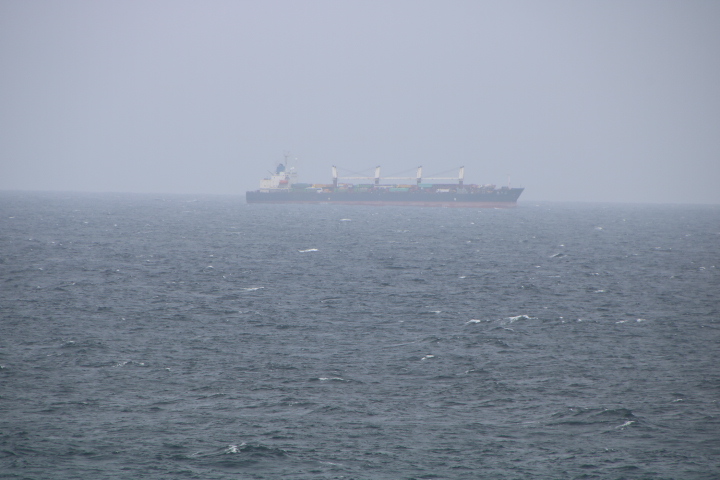At 17S 11E it was 17⁰C, bright and cloudy with white topped waves during breakfast.


We are nearer to the coast than anticipated, either because of the weather or the events during the early hours. Sleep for everyone was interrupted by a medical call for help. A passenger needed an emergency blood transfusion, and the call went out for, “any male with blood type A to call Reception”. Fortunately, there were volunteers and we await the outcome.

Ship alert! At 11:00 we spotted a bulk carrier to our starboard. This was the first sighting at sea for several days. An hour later two more followed. At noon, we were 15 miles off the Skeleton Coast of Namibia in 30 – 35 mph winds and 9ft waves. The Captain told us that despite all four engines running we are meeting the weather head on and this may delay our arrival tomorrow in Walvis Bay.


As we approach Namibia from Europe, we are again following in the wake of the navigators. This time it is Diego Cão’s expedition from Lisbon in 1485. His crew were the first Europeans to land at Walvis Bay. Bartolomeu Dias called in on 8th December 1487, but it wasn’t until the 18th century, when British, French and American whalers used the port that it became important and by then the Dutch had colonised the area. A few years later the French invaded Holland and thereby prompted the British to take control of Walvis Bay and the area around Cape Town, known today as Cape Colony.
We saw more seabirds flying alongside the ship because we are closer to land than on previous days. Namibia is important to birds, especially those that migrate from Europe. They arrive here around September – October and stay until April, before returning.